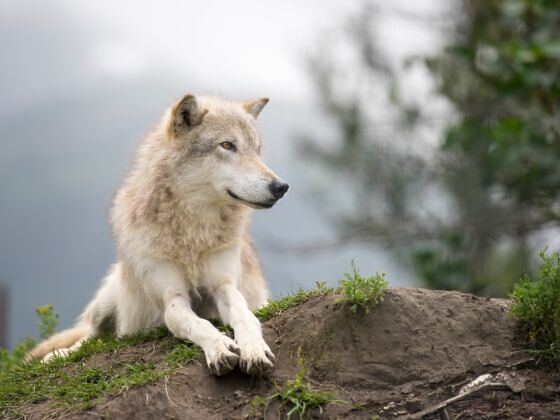As part of a 2020 proposal voted on by residents, Colorado Parks and Wildlife (CPW) released five gray wolves onto public land in Grand County this week, in an attempt to create a permanent, self-sustaining wolf population and reintroduce the gray wolf species to Colorado. The plan calls for releasing a total of 50 wolves in some of Colorado’s most popular state and national parks over the next five years, which met with fierce resistance by farmers concerned about attacks on livestock. Ultimately, however, voters approved the plan.

Colorado Just Released 5 Gray Wolves Onto Public Land. Here’s What It Means for Hikers
Colorado hasn’t had wolves since the 1940s. Reintroduction will bring back the iconic species, but that doesn’t mean there aren’t questions. For people who enjoy outdoor recreation in a state where getting into nature is popular throughout the year, one of the biggest questions is whether or not the release in and near state and federal parks will cause issues for hikers.
A historic day for Colorado and for the first time ever — we released 5 wolves, 3 males and 2 females, in Grand County today.
Captured in Oregon, the wolves were evaluated by our veterinarians & biologists, fitted with GPS collars & transported to Colorado for their release. pic.twitter.com/1Q1EiRxoZf
— Colorado Parks and Wildlife (@COParksWildlife) December 19, 2023
The modern state of gray wolves in national parks
The CPW isn’t completely out in left field here by trying to give wolves a habitat in Colorado. Plenty of national parks around the country still have gray wolves, though their number is dwindling. Yellowstone National Park, spread across Wyoming, Idaho, and Montana, is one of the country’s premier wildlife viewing destinations, and also one of the Greater Yellowstone Ecosystem’s gray wolf recovery areas. In the mid 1990s, 41 wild gray wolves from Canada and Montana were set free in Yellowstone, which helped restart the area’s gray wolf population. You can also see them just next door in Wyoming’s Grand Teton National Park, whose wolf population was impacted by the Yellowstone reintroduction. Parks like Isle Royale National Park in Michigan, Minnesota’s Voyageurs National Park, and Katmai National Park in Alaska, are also home to robust (and growing) gray wolf populations.
Colorado’s future gray wolf release plan
This is just the first stage of Colorado’s reintroduction. The CPW will repeat the process until at least 10-15 wolves have been reintroduced in Colorado by mid-March, with the goal of ultimately releasing 30 to 50 wolves in the next three to five years. The wolves were captured in Oregon, where they were evaluated by CPW veterinarians and biologists to ensure they were fit for relocation. Then, each wolf was fitted with a GPS satellite collar so they could be tracked upon release by the CPW staff. The same process will be repeated with subsequent releases.
The high-level goal of the program is to recover and maintain a viable wolf population in the state’s public lands, while also managing interactions between those wolves and people and livestock. That means making sure CPW communicates effectively with rural and agricultural communities, including offering tools to prevent wolves from attacking livestock. “We knew it would need to be adaptive, it’s not perfect,” the CPW explained, according to CBS News. “But it’s pretty good and we will keep adapting to make it better and better and we have been listening to many voices.”
What to do if you see a wolf on your hike
While the chances of encountering a wolf at close range on your next Colorado hike is slim, the concern is still valid: what do you (or don’t you) do? First, and most importantly, if you have a child or dog with you, make sure to keep them close. Wolves can sometimes regard dogs as competition, so keep your dog at your side. It’s also important to make sure the wolf has an escape route. If it feels cornered, it may become hostile, but otherwise will likely simply flee the area. While curious creatures, wolves aren’t looking to attack humans. If the wolf doesn’t walk away, stand tall and don’t crouch down, back away slowly, and if necessary, clap or shout for help. In a pinch, you can also use bear spray for additional protection.